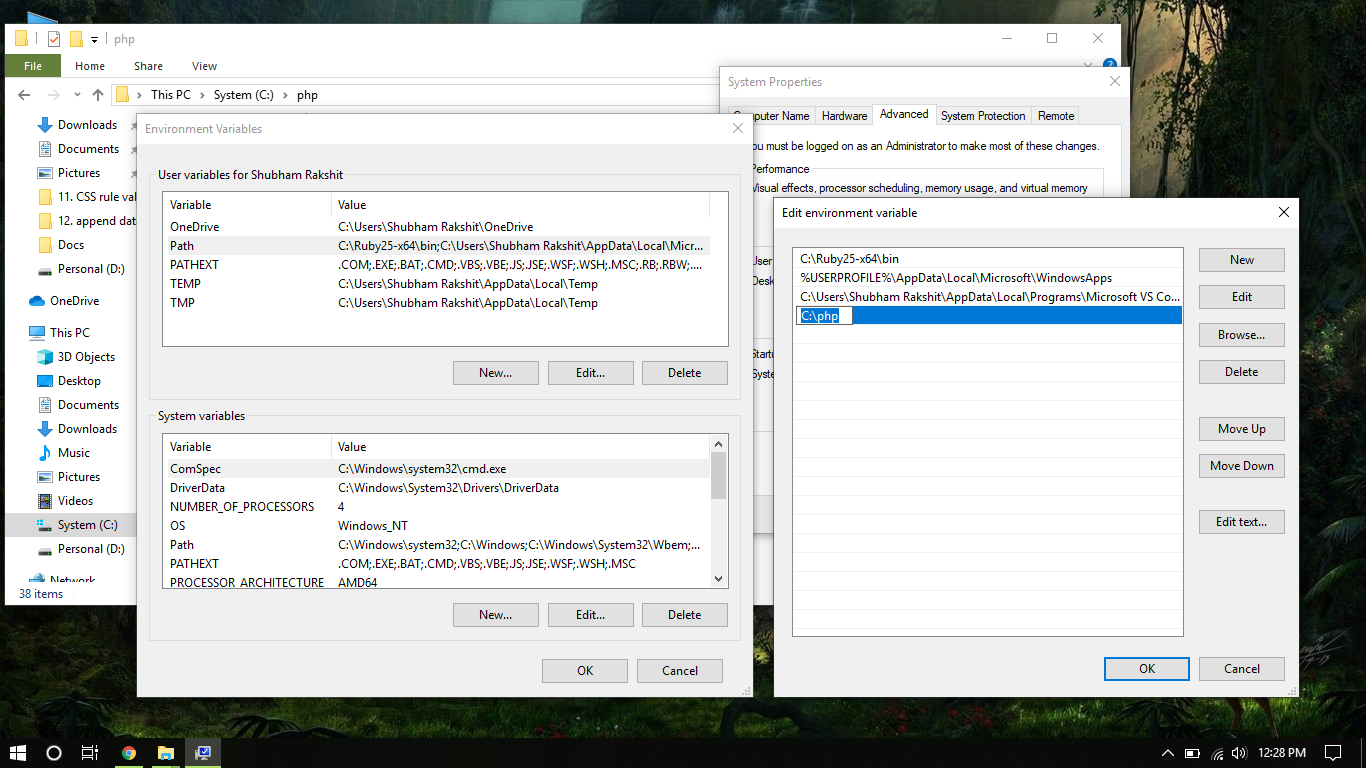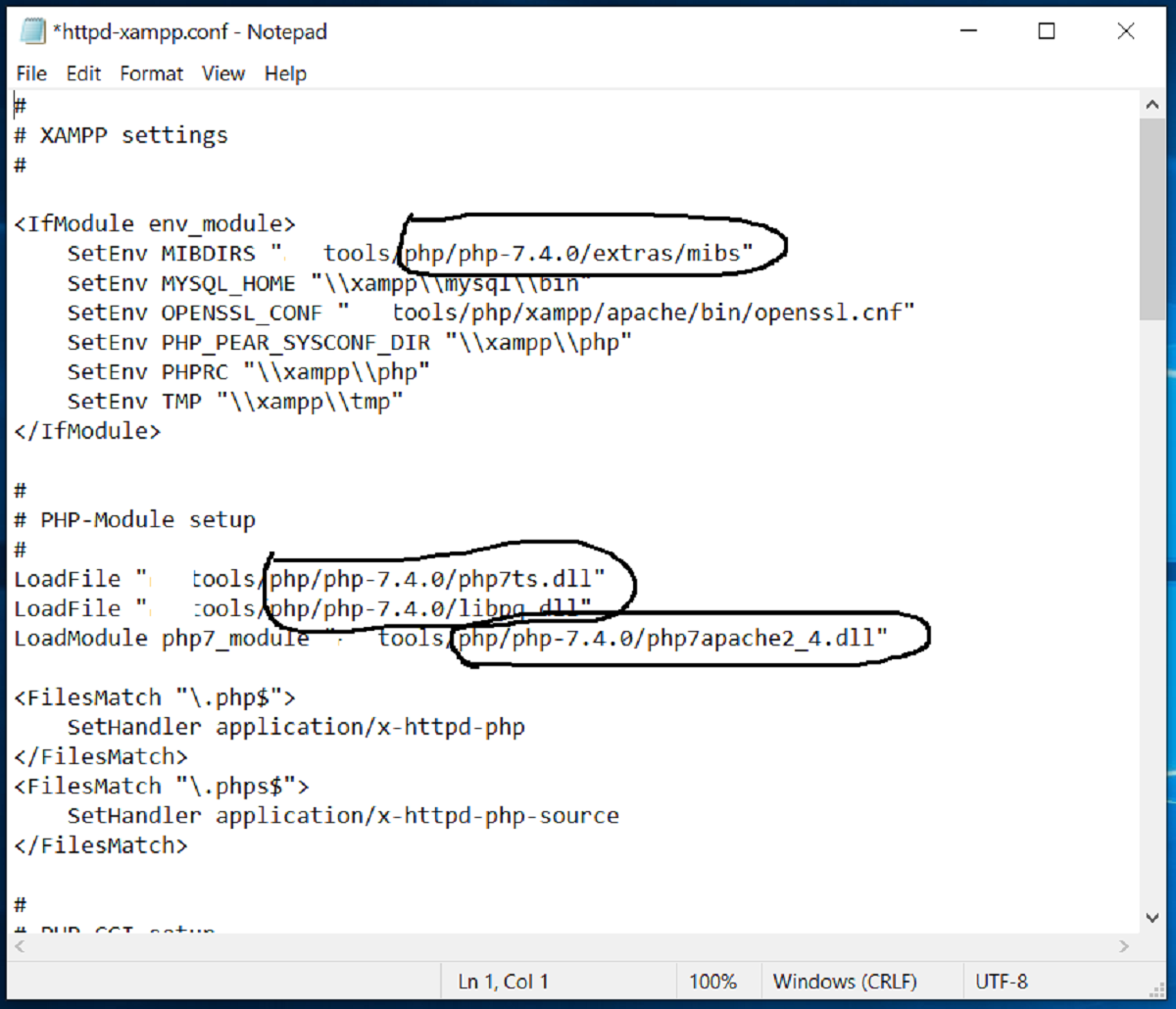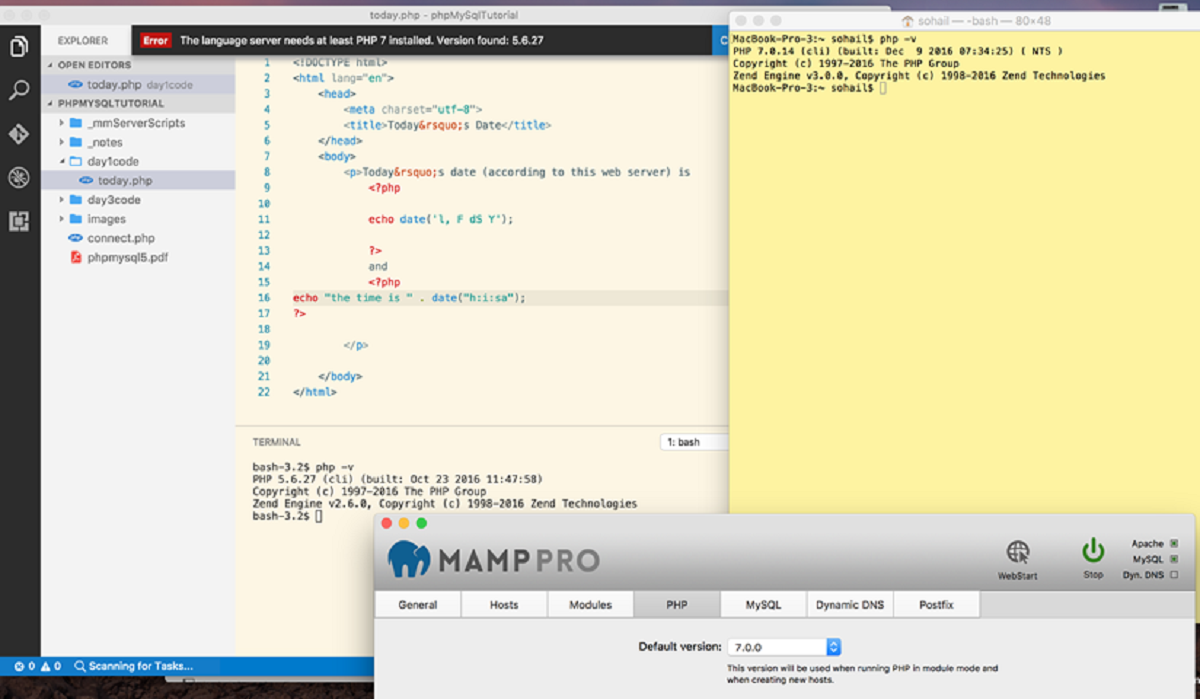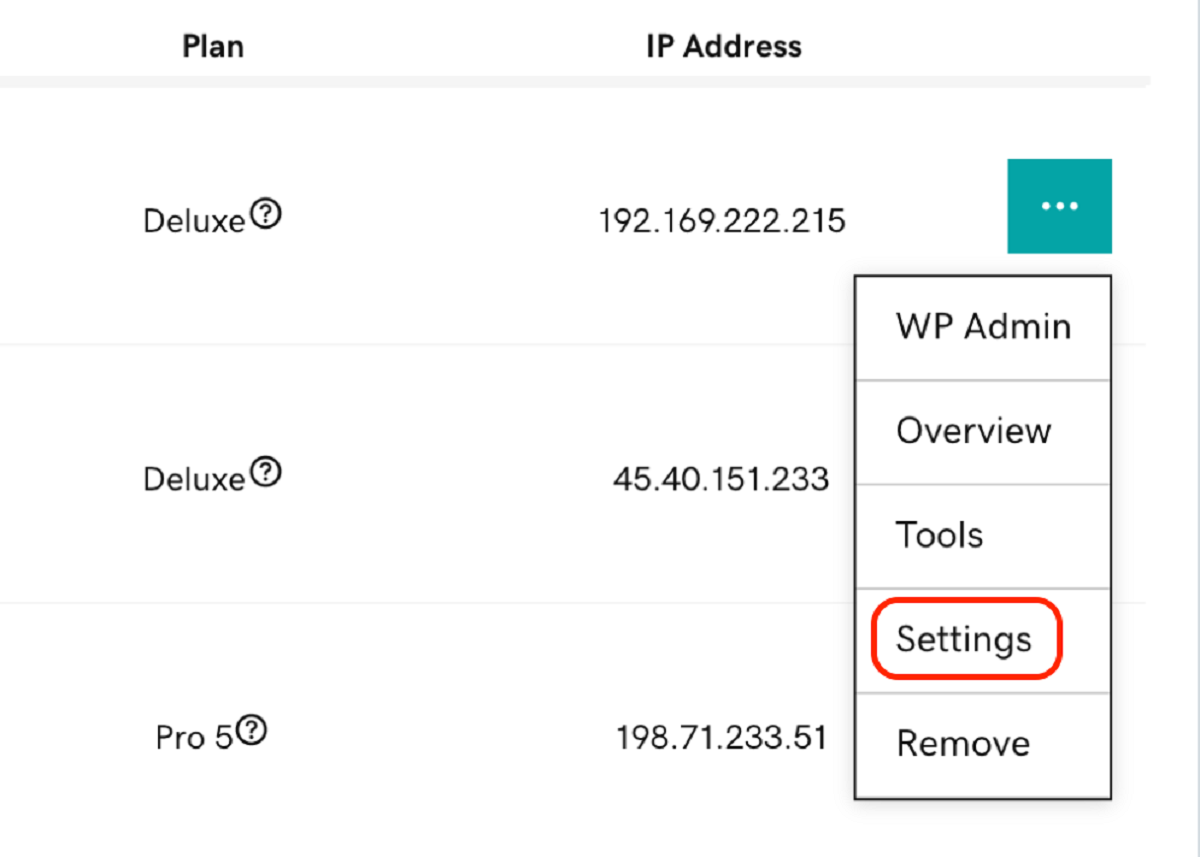Introduction
PHP is a widely-used scripting language that is specifically designed for web development. It is a versatile language that allows developers to create dynamic and interactive websites and applications. PHP stands for Hypertext Preprocessor, and it is primarily used for server-side scripting.
One of the biggest advantages of PHP is its compatibility with different operating systems, making it a versatile choice for developers. It is an open-source language, which means it is free to use and distribute. PHP is also known for its ease of use and flexibility, making it a popular choice for beginners and experienced developers alike.
PHP can be embedded directly into HTML code or used in standalone PHP files. This allows developers to mix PHP and HTML seamlessly, creating dynamic web pages that can interact with databases, handle form submissions, and perform various other tasks.
With PHP, developers have access to a vast array of features and functions, making it easy to build powerful web applications. PHP supports various databases, such as MySQL, Oracle, and PostgreSQL, allowing developers to create dynamic websites that can store and retrieve data. PHP also includes built-in functions for handling file operations, managing sessions, manipulating strings, and much more.
In recent years, PHP has evolved significantly and introduced new features and improvements. The latest version, PHP 8, brings enhanced performance, new language features, and improved error handling. This ensures that PHP remains a relevant and efficient choice for web development.
In this article, we will explore various aspects of PHP, from installation and setup to advanced topics such as object-oriented programming, file handling, and working with databases. We will cover the basic syntax, data types, control structures, functions, and error handling. Additionally, we will discuss best practices for security and performance optimization.
Whether you are new to PHP or looking to enhance your existing skills, this article will provide you with a comprehensive guide to get started with PHP development. Let’s dive in and explore the world of PHP programming!
Installing PHP
In order to start working with PHP, you need to install it on your local machine or server. Fortunately, PHP is easy to install and is supported by various operating systems, including Windows, macOS, and Linux.
The first step is to download the PHP installation package from the official PHP website (https://www.php.net/downloads.php). Make sure you choose the version that is compatible with your operating system and requirements. It is recommended to use the latest stable version for optimal performance and security.
If you are using a Windows operating system, you can download the PHP Windows binaries, which include the necessary files to run PHP on a Windows server or workstation. Simply follow the installation wizard and choose the appropriate options based on your requirements. The wizard will guide you through the process, including configuring the PHP installation and setting up the necessary environment variables.
For macOS users, PHP comes pre-installed on most versions of macOS. You can check if PHP is installed by opening the Terminal and typing php -v. If PHP is not installed or you want to update to the latest version, you can use the package manager Homebrew or download the macOS binaries from the PHP website. Follow the instructions provided to complete the installation process.
On Linux systems, you can install PHP using the package manager specific to your distribution. For example, on Ubuntu, you can use apt-get to install PHP, while on CentOS, you can use yum. Simply run the appropriate command in the terminal to install PHP along with any necessary dependencies.
Once PHP is installed, you can test if it is working properly by creating a simple PHP file and running it on a web server. Create a new file with a .php extension, and add the following code:
<?php
phpinfo();
?>Save the file and place it in the appropriate directory of your web server. Open a web browser and navigate to the file’s URL. If PHP is configured correctly, you should see a page displaying detailed information about your PHP installation.
Congratulations! You have successfully installed PHP on your system. Now you are ready to start building dynamic websites and applications using PHP’s powerful features and functions.
Setting Up a Local Development Environment
Before diving into PHP development, it is important to set up a local development environment. This allows you to test and debug your PHP code on your own machine before deploying it to a live server.
The first component of a local development environment is a web server. The most common choice for PHP development is Apache, although other options like Nginx and LiteSpeed are also available. You can install Apache using a package manager specific to your operating system or by downloading the binaries from the official Apache website. Once installed, make sure the Apache web server is up and running.
The next step is to install PHP alongside the web server. Make sure you have already installed PHP, as discussed in the previous section “Installing PHP.” Once PHP is installed, you need to configure the web server to work with PHP. This involves adding PHP as a handler for PHP files so that the web server can process them correctly.
For Apache, you can use the PHP module to integrate PHP with the web server. This module needs to be enabled in the Apache configuration file. Depending on your operating system, the configuration file can be found in different locations. Once you locate the file, open it in a text editor and look for the section that loads modules. Uncomment the line that loads the PHP module by removing the “#” symbol at the beginning of the line. Save the file and restart the Apache server.
If you are using Nginx or LiteSpeed, the configuration process is slightly different. Both web servers require additional configurations to work with PHP. You can reference the official documentation for each web server to learn how to integrate PHP accordingly.
Now that your web server and PHP are set up, you need a text editor or integrated development environment (IDE) to write your PHP code. There are several options available, such as Visual Studio Code, PhpStorm, Sublime Text, and more. Choose the one that suits your preferences and install it on your system.
Once you have your development environment ready, it is recommended to create a separate directory to store your PHP projects. This helps keep your projects organized and makes it easier to manage and navigate between them. You can create a folder called “htdocs” or “www” within the web server’s document root directory and place your PHP files and projects inside it.
To test your local development environment, create a new PHP file within your project directory with some simple code, such as:
<?php
echo "Hello, World!";
?>Save the file with a .php extension and open it in your web browser using the appropriate URL, such as http://localhost/your-project/filename.php. If everything is set up correctly, you should see “Hello, World!” displayed on the page.
By setting up a local development environment, you have a secure and controlled environment to work on your PHP projects. It allows you to develop and test your code efficiently, improving your productivity as you build and enhance your PHP applications.
Basic Syntax and Variables
Understanding the basic syntax and variables is essential when starting with PHP development. The syntax refers to the structure and rules that govern the writing of PHP code, while variables are used to store and manipulate data.
PHP code is typically enclosed within PHP tags: <?php and ?>. Anything placed between these tags will be interpreted as PHP code.
To define a variable in PHP, you use the $ symbol followed by the variable name. Variables in PHP are case-sensitive, so $var and $Var would be considered two different variables.
PHP supports various data types for variables, including:
- Strings: Used to store and manipulate textual data. Strings are enclosed in single quotes (
') or double quotes ("). - Integers: Used to store whole numbers, positive or negative.
- Floats: Used to store decimal numbers.
- Booleans: Used to store true or false values.
- Arrays: Used to store multiple values in a single variable.
- Objects: Used to create objects, which are instances of classes.
- NULL: Used to indicate that a variable has no value.
Variables in PHP do not require explicit type declarations. The type of a variable is determined automatically based on the value assigned to it. For example, if you assign a string value to a variable, it will be treated as a string type. However, PHP does allow for explicit typecasting if needed.
To demonstrate the basic syntax and usage of variables, consider the following example:
<?php
// Variable assignment
$name = "John Doe";
$age = 25;
$isEmployed = true;
$favoriteFruits = array("Apple", "Banana", "Orange");
// Output
echo "Name: " . $name . "<br>";
echo "Age: " . $age . "<br>";
echo "Employed: " . ($isEmployed ? "Yes" : "No") . "<br>";
echo "Favorite Fruits: " . implode(", ", $favoriteFruits) . "<br>";
?>In the above example, we assign different values to variables and then display their contents using the echo statement. The . operator is used for concatenation, allowing us to combine strings and variable values.
Understanding the basic syntax and mastering variable usage in PHP is crucial for further development. It forms the foundation upon which more complex PHP programs are built, allowing you to manipulate data and create dynamic applications with ease.
Data Types and Operators
Data types and operators play a crucial role in PHP programming. Understanding the different data types and how to use operators effectively is essential for manipulating and processing data in PHP.
PHP supports several built-in data types, including:
- Strings (text): Used to represent and manipulate textual data. Strings can be enclosed in single quotes (”) or double quotes (“”).
- Integers (whole numbers): Used to represent positive or negative whole numbers, such as 0, 1, -2, etc.
- Floats (decimal numbers): Used to represent decimal numbers with fractional parts, such as 3.14, -1.5, etc.
- Booleans (true/false): Used to represent logical values of true or false.
- Arrays (collections of values): Used to store multiple values in a single variable. Arrays can be indexed or associative.
- Objects (instances of classes): Used to represent real-world objects and their properties and behaviors.
- NULL (no value): Used to indicate that a variable has no value assigned to it.
PHP provides various operators to perform mathematical calculations, string manipulation, comparison, and logical operations. Some commonly used operators include:
- Arithmetic operators: Used for mathematical calculations, such as addition (+), subtraction (-), multiplication (*), division (/), modulus (%), and exponentiation (**).
- Assignment operators: Used to assign values to variables, such as the equals sign (=), combined with arithmetic operators (+=, -=, *=, /=, %=), and more.
- Comparison operators: Used to compare values, such as equal to (==), not equal to (!=), greater than (>), less than (<), greater than or equal to (>=), less than or equal to (<=), and more.
- Logical operators: Used to combine conditions, such as AND (&&), OR (||), and NOT (!), to create logical expressions.
- String operators: Used to manipulate strings, such as the concatenation operator (.), which combines two strings together.
Here is an example that demonstrates the use of different data types and operators:
<?php
// String
$name = "John Doe";
// Integer
$age = 30;
// Float
$price = 9.99;
// Boolean
$isEmployed = true;
// Array
$fruits = array("Apple", "Banana", "Orange");
// Output
echo "Name: " . $name . "<br>";
echo "Age: " . $age . "<br>";
echo "Price: " . $price . "<br>";
echo "Employed: " . ($isEmployed ? "Yes" : "No") . "<br>";
echo "Fruits: " . implode(", ", $fruits) . "<br>";
// Arithmetic operation
$total = $price * 2;
echo "Total price: " . $total . "<br>";
// String concatenation
$greeting = "Hello, " . $name . "!";
echo $greeting;
?>In the example above, different data types, including string, integer, float, boolean, and array, are used to store and manipulate various values. Operators such as concatenation and arithmetic multiplication are also used to perform operations on variables.
Mastery of data types and operators in PHP allows you to manipulate and process data effectively, taking your PHP programming skills to the next level.
Control Structures
Control structures are used in PHP to control the flow of execution based on different conditions or to repeat a block of code multiple times. They allow developers to make decisions and perform actions based on specific conditions, making PHP programs more dynamic and versatile.
PHP provides several control structures, including:
- If…else: Used to perform different actions based on a condition. If the condition is true, the code block inside the if statement is executed. Otherwise, the code block inside the else statement, if present, is executed.
- Switch: Used to select one of many blocks of code to execute. It compares a value against various possible cases and executes the code block associated with the matching case.
- For loop: Used to repeatedly execute a block of code based on a set number of iterations. It consists of an initialization, a condition, and an increment/decrement expression. The code block is executed as long as the condition is true.
- While loop: Used to repeatedly execute a block of code as long as a condition is true. The condition is checked before each iteration, and if it is true, the code block is executed.
- Do…while loop: Similar to the while loop, but the condition is checked after each iteration. This ensures that the code block is executed at least once, even if the condition is initially false.
- Foreach loop: Used to iterate over the elements of an array or other iterable objects. It simplifies the process of traversing and processing each element without the need for managing an index.
Here is an example that demonstrates the use of control structures in PHP:
<?php
// If...else statement
$age = 25;
if ($age >= 18) {
echo "You are eligible to vote.<br>";
} else {
echo "You are not eligible to vote.<br>";
}
// Switch statement
$dayOfWeek = "Monday";
switch ($dayOfWeek) {
case "Saturday":
case "Sunday":
echo "It's the weekend.<br>";
break;
case "Monday":
echo "It's Monday. Keep pushing!<br>";
break;
default:
echo "It's a weekday.<br>";
break;
}
// For loop
for ($i = 1; $i <= 5; $i++) {
echo $i . "<br>";
}
// While loop
$num = 1;
while ($num <= 3) {
echo "Number: " . $num . "<br>";
$num++;
}
// Do...while loop
$num = 1;
do {
echo "Number: " . $num . "<br>";
$num++;
} while ($num <= 3);
// Foreach loop
$fruits = array("Apple", "Banana", "Orange");
foreach ($fruits as $fruit) {
echo $fruit . "<br>";
}
?>In the example above, different control structures are used to perform actions based on conditions or execute code repeatedly. The if…else statement checks the age and outputs a message based on eligibility to vote. The switch statement checks the day of the week and provides different messages for specific cases. The for loop, while loop, do… while loop, and foreach loop are used to generate repeated outputs based on different conditions.
By using control structures effectively, you have the ability to create dynamic and responsive PHP applications that can adapt to various scenarios and user interactions.
Functions and Built-in Functions
Functions are an essential part of PHP programming. They allow you to encapsulate a block of code into a reusable unit. Functions can accept input parameters, perform actions, and return a value if needed. By using functions, you can modularize your code, improve code reusability, and make your code more organized and maintainable.
In PHP, you can create your own custom functions using the function keyword followed by the function name and a code block surrounded by curly braces. Here’s an example of a custom function:
<?php
// Custom function to calculate the square of a number
function calculateSquare($number) {
return $number * $number;
}
// Using the custom function
$result = calculateSquare(5);
echo "The square of 5 is: " . $result;
?>In the example above, the calculateSquare() function takes a parameter $number and returns the square of that number. When the function is called with the value 5, the returned result is displayed as “The square of 5 is: 25”.
PHP also provides a vast collection of built-in functions that perform common tasks and operations. These functions cover a wide range of functionalities, including string manipulation, array operations, mathematical calculations, date and time handling, database operations, and more. Here are a few examples showcasing some commonly used built-in functions:
<?php
// String functions
$name = "John Doe";
$length = strlen($name); // Get the length of the string
$uppercase = strtoupper($name); // Convert the string to uppercase
// Array functions
$fruits = array("Apple", "Banana", "Orange");
$numberOfFruits = count($fruits); // Get the number of elements in the array
$lastElement = end($fruits); // Get the last element of the array
// Mathematical functions
$number = 5.6;
$roundedNumber = round($number); // Round the number to the nearest integer
$randomNumber = rand(1, 10); // Generate a random number between 1 and 10
// Date and time functions
$currentDate = date("Y-m-d"); // Get the current date in the specified format
$timestamp = strtotime("next week"); // Convert a date string to a UNIX timestamp
echo "Length of name: " . $length . "<br>";
echo "Name in uppercase: " . $uppercase . "<br>";
echo "Number of fruits: " . $numberOfFruits . "<br>";
echo "Last fruit: " . $lastElement . "<br>";
echo "Rounded number: " . $roundedNumber . "<br>";
echo "Random number: " . $randomNumber . "<br>";
echo "Current date: " . $currentDate . "<br>";
echo "Next week: " . date("Y-m-d", $timestamp) . "<br>";
?>In the above example, various built-in functions are used to manipulate strings, perform array operations, calculate mathematical values, and manipulate date and time. The output of each function is displayed using the echo statement.
By utilizing both custom functions and built-in functions, you have the ability to streamline your PHP code, increase productivity, and leverage a wide range of functionalities available in PHP.
Arrays and Loops
Arrays and loops are essential components in PHP that allow you to work with and manipulate sets of data efficiently. Arrays are used to store multiple values in a single variable, while loops enable you to iterate over arrays or repeat a set of instructions multiple times.
In PHP, arrays can be indexed or associative. Indexed arrays use numeric keys to access elements, starting from 0. Associative arrays, on the other hand, use custom keys that are associated with specific values. Here’s an example showcasing both types of arrays:
<?php
// Indexed array
$fruits = array("Apple", "Banana", "Orange");
// Associative array
$person = array(
"name" => "John Doe",
"age" => 30,
"occupation" => "Developer"
);
// Accessing array elements
echo "First fruit: " . $fruits[0] . "<br>";
echo "Name: " . $person["name"] . "<br>";
// Modifying array elements
$fruits[1] = "Mango";
$person["age"] = 35;
// Adding elements to an array
$fruits[] = "Grapes";
$person["country"] = "USA";
// Looping through an indexed array
foreach ($fruits as $fruit) {
echo $fruit . "<br>";
}
// Looping through an associative array
foreach ($person as $key => $value) {
echo $key . ": " . $value . "<br>";
}
?>In the example above, an indexed array, $fruits, is created to store different fruit names. An associative array, $person, is used to store information about a person. The code demonstrates how to access array elements, modify their values, and add new elements to the arrays.
Loops are used to iterate over arrays or repeat a set of instructions for a specified number of times. PHP provides several types of loops, including the for loop, while loop, do...while loop, and the specialized foreach loop for iterating over arrays. Here’s an example showcasing the usage of different loops:
<?php
// For loop
for ($i = 0; $i < 5; $i++) {
echo $i . "<br>";
}
// While loop
$count = 1;
while ($count <= 3) {
echo "Count: " . $count . "<br>";
$count++;
}
// Do...while loop
$number = 1;
do {
echo "Number: " . $number . "<br>";
$number++;
} while ($number <= 3); // Foreach loop with an indexed array $fruits = array("Apple", "Banana", "Orange"); foreach ($fruits as $fruit) { echo $fruit . "<br>"; } // Foreach loop with an associative array $person = array( "name" => "John Doe",
"age" => 30,
"occupation" => "Developer"
);
foreach ($person as $key => $value) {
echo $key . ": " . $value . "<br>";
}
?>In the above example, the different types of loops are used to display numbers, iterate while a condition is true, and repeat a block of code at least once. The foreach loop is used to iterate over the elements of both indexed and associative arrays.
Arrays and loops are powerful tools in PHP programming. They allow you to store and manipulate multiple values efficiently and iterate over arrays to process data dynamically.
Object-Oriented Programming (OOP)
Object-Oriented Programming (OOP) is a programming paradigm that revolves around the concept of objects. In PHP, OOP allows you to structure your code into classes and objects, making your code more organized, reusable, and maintainable.
A class is a blueprint for creating objects. It defines the properties (attributes) and behaviors (methods) that an object of that class can have. Here’s an example of a simple class in PHP:
<?php
class Car {
// Properties
public $brand;
public $model;
public $color;
// Method
public function drive() {
echo "The " . $this->brand . " " . $this->model . " is driving.";
}
}
// Creating objects
$car1 = new Car();
$car1->brand = "Toyota";
$car1->model = "Camry";
$car1->color = "Blue";
$car2 = new Car();
$car2->brand = "Honda";
$car2->model = "Civic";
$car2->color = "Red";
// Accessing object properties
echo "Car 1: " . $car1->brand . " " . $car1->model . " (" . $car1->color . ")" . "<br>";
echo "Car 2: " . $car2->brand . " " . $car2->model . " (" . $car2->color . ")" . "<br>";
// Calling object methods
$car1->drive();
?>In the example above, a class called Car is defined with three properties: brand, model, and color. It also has a method called drive that outputs a message when called. Two objects, $car1 and $car2, are created based on the Car class. The properties of these objects are set, and their values are accessed using the object notation (->). The drive method of $car1 is also called to display a specific message.
OOP introduces several important concepts, such as:
- Inheritance: Allows classes to inherit properties and methods from other classes. This promotes code reuse and allows for the creation of more specialized classes.
- Encapsulation: Encloses properties and methods within a class, preventing direct access from outside the class. It allows for better control and organization of code.
- Polymorphism: Enables objects to take on different forms and behaviors based on their context. This allows for flexibility and extensibility in code design.
By utilizing OOP principles in PHP, you can create modular, extensible, and maintainable code. It allows for better organization, encapsulation of data, and the ability to model real-world entities in a more intuitive and cohesive manner.
File Handling
File handling is an important aspect of web development, allowing you to perform operations on files such as reading, writing, modifying, and deleting. In PHP, there are various functions and techniques available to handle files efficiently and securely.
PHP provides several built-in functions to handle file operations:
- file_exists: Checks if a file or directory exists.
- is_file: Checks if a given path is a regular file.
- is_dir: Checks if a given path is a directory.
- fopen: Opens a file or URL for reading or writing.
- fread: Reads a specified number of bytes from a file.
- fwrite: Writes data to a file.
- fclose: Closes an opened file.
- file_get_contents: Reads the entire content of a file into a string.
- file_put_contents: Writes a string to a file.
- unlink: Deletes a file.
Here is an example showcasing some of these file handling functions:
<?php
// Check if a file exists
if (file_exists("file.txt")) {
echo "The file exists.<br>";
} else {
echo "The file does not exist.<br>";
}
// Read from a file using fopen and fread
$myfile = fopen("file.txt", "r") or die("Unable to open file!");
$data = fread($myfile, filesize("file.txt"));
fclose($myfile);
echo "File content: " . $data . "<br>";
// Read from a file using file_get_contents
$fileContent = file_get_contents("file.txt");
echo "File content (file_get_contents): " . $fileContent . "<br>";
// Write to a file using fopen and fwrite
$myFile = fopen("newfile.txt", "w") or die("Unable to open file!");
$txt = "This is some text.";
fwrite($myFile, $txt);
fclose($myFile);
echo "File 'newfile.txt' created and written successfully.<br>";
// Write to a file using file_put_contents
$fileData = "Some data to write.";
file_put_contents("newfile.txt", $fileData, FILE_APPEND);
echo "Data appended to 'newfile.txt' successfully.<br>";
// Delete a file
if (unlink("newfile.txt")) {
echo "File 'newfile.txt' deleted successfully.<br>";
} else {
echo "Failed to delete 'newfile.txt'.<br>";
}
?>In the above example, the code checks if a file exists, reads from a file using fopen and fread, or file_get_contents, writes to a file using fopen and fwrite, or file_put_contents, and deletes a file using unlink. Appropriate error handling is done along with output messages to indicate the success or failure of each operation.
When working with files, it is essential to consider security measures such as validating user input, sanitizing file names, and verifying file permissions to ensure the security and integrity of your application and data.
Working with Databases
Databases are integral to many web applications, allowing you to store, retrieve, and manage data efficiently. PHP provides robust support for working with databases, making it easy to perform various database operations.
PHP supports several database management systems, with MySQL being one of the most commonly used. To work with a database in PHP, you need to establish a connection using the appropriate database extension and credentials. Here is an example of connecting to a MySQL database:
<?php
// Database connection details
$servername = "localhost";
$username = "root";
$password = "password";
$dbname = "mydatabase";
// Create a connection
$conn = new mysqli($servername, $username, $password, $dbname);
// Check the connection
if ($conn->connect_error) {
die("Connection failed: " . $conn->connect_error);
}
echo "Connected successfully.<br>";
// Perform database operations here...
// Close the connection
$conn->close();
?>In the example above, a connection is established to a MySQL database using the mysqli extension. If the connection fails, an error message is outputted. Otherwise, a success message is displayed.
Once the connection is established, you can perform various database operations, such as executing SQL queries to retrieve, insert, update, or delete data. Here is an example of executing a SELECT query:
<?php
$sql = "SELECT * FROM users";
$result = $conn->query($sql);
if ($result->num_rows > 0) {
while ($row = $result->fetch_assoc()) {
echo "Name: " . $row["name"] . ", Email: " . $row["email"] . "<br>";
}
} else {
echo "No records found.";
}
?>In the above example, a SQL query is executed to retrieve records from a table called “users”. The num_rows property of the result object is used to check if there are any rows returned. If rows exist, a loop is used to fetch each row and display the desired data.
Other common database operations include inserting data using an INSERT query, updating data using an UPDATE query, and deleting data using a DELETE query. PHP provides appropriate methods and techniques to handle these operations effectively.
When working with databases, it is important to consider security measures such as using prepared statements or parameterized queries to prevent SQL injection attacks, validating user input, and managing database transactions to ensure data integrity.
Working with databases in PHP opens up a wide range of possibilities for storing and managing data in your web applications. It allows you to create dynamic and interactive websites that can handle and manipulate data efficiently.
Error Handling and Debugging
Error handling and debugging are critical aspects of PHP development. Handling errors properly ensures that your application can gracefully recover from unexpected situations, while debugging helps identify and fix issues during development or when troubleshooting problems in a live environment.
PHP provides various mechanisms for error handling:
- Error Reporting: PHP’s error reporting mechanism allows you to control how errors and warnings are displayed. By setting the appropriate error reporting level, you can choose to display errors on the screen or log them to a file.
- Try…catch: The try…catch block allows you to catch and handle specific types of exceptions that occur during the execution of your PHP code. By wrapping code within a try block and specifying catch blocks for different exception types, you can gracefully handle errors and prevent them from causing the application to crash.
- Error Logging: PHP provides functionality to log errors to a file for later analysis. By enabling error logging, you can record errors and warnings, including relevant information such as error messages, timestamps, and the location where the error occurred.
Debugging is the process of identifying and fixing issues or bugs in your PHP code. PHP provides several tools and techniques to aid in debugging:
- var_dump: The
var_dumpfunction is useful for displaying the structure and values of variables. It helps identify the types and values of variables at specific points in your code, assisting in understanding how data is stored and manipulated. - error_log: The
error_logfunction allows you to send a debugging message to the error log. This helps track specific values or variables during program execution and can be used to debug your code by providing insights into the program flow. - Debugging Tools: Integrated Development Environments (IDEs) such as PhpStorm, Visual Studio Code, and Eclipse provide debugging capabilities. These tools allow you to set breakpoints, step through code, inspect variables, and evaluate expressions to identify and resolve issues.
When debugging PHP code, it is common to encounter a common set of errors, including syntax errors, undefined variable or function errors, and logic flaws. It is crucial to carefully examine error messages, review code for typos or missing semicolons, and analyze program flow to pinpoint and resolve issues effectively.
By implementing proper error handling mechanisms and utilizing debugging techniques, you can identify and address errors in your PHP code, ensuring the smooth functioning of your application and enhancing its stability and performance.
Security Best Practices
Ensuring the security of your PHP applications is crucial to protect sensitive data and prevent unauthorized access. By following best practices and adopting proper security measures, you can mitigate potential risks and vulnerabilities. Here are some essential security best practices to consider when developing PHP applications:
- Input Validation and Escaping: Validate and sanitize all user input to prevent vulnerabilities such as cross-site scripting (XSS) and SQL injection attacks. Utilize functions like
htmlspecialcharsandmysqli_real_escape_stringto escape user input before using it in SQL queries or displaying it on web pages. - Secure Database Operations: Use prepared statements or parameterized queries to prevent SQL injection attacks. Avoid constructing SQL queries dynamically by concatenating user input directly.
- Password Management: Store passwords securely using hashing algorithms such as bcrypt or Argon2. Never store passwords in plain text. Additionally, enforce strong password policies for users, including the use of complex passwords and regular password changes.
- Secure Session Management: Use secure session handling techniques, such as assigning unique session IDs, limiting session lifetimes, and regenerating session IDs after login and logout. Store session data securely and avoid exposing sensitive information in session variables.
- Protect Against Cross-Site Scripting (XSS): Implement input validation and output encoding to prevent XSS attacks. Use web application firewalls (WAFs) and frameworks with built-in XSS protection mechanisms.
- Secure File Uploads: Validate file types, restrict file sizes, and store uploaded files in a separate directory with restricted permissions. Do not rely solely on file extensions for validation as they can be spoofed.
- HTTP Security Headers: Implement security headers such as Content Security Policy (CSP), Strict-Transport-Security (HSTS), and X-Frame-Options to mitigate various web-based attacks such as clickjacking and cross-site scripting.
- Secure Code Deployment: Regularly update and patch PHP and other software components to ensure you have the latest security fixes. Disable unnecessary PHP modules and functions that are not used in your application.
- Secure File and Directory Permissions: Assign appropriate file and directory permissions to restrict access and prevent unauthorized modifications. Ensure sensitive files, such as configuration files, are not accessible from the web.
- Regular Security Audits: Conduct periodic security audits and vulnerability assessments to identify and address potential security weaknesses in your application. Stay informed about the latest security threats and industry best practices.
By employing these security best practices, you can significantly enhance the security of your PHP applications. Remember that security is an ongoing process, and it is essential to stay updated with the latest security practices and vulnerabilities to protect your application and its data.
Performance Optimization
Optimizing the performance of your PHP applications is crucial to ensure fast and efficient execution, providing a better user experience and reducing server load. Here are some performance optimization techniques you can employ:
- Minimize Database Queries: Limit the number of database queries by optimizing and combining queries whenever possible. Use techniques like joining tables, indexing columns, and caching query results to reduce the load on the database server.
- Cache Data: Utilize caching techniques to store frequently accessed data in memory. This can include database query results, rendered views or templates, and any other data that is costly to retrieve or compute. Caching can significantly reduce the response time and server load.
- Optimize CSS and JavaScript Files: Minify and compress CSS and JavaScript files to reduce their size. Combining multiple files into a single file and loading them asynchronously or deferred can also improve page load time.
- Optimize Images: Compress and optimize images to reduce file size without compromising image quality. Use appropriate image formats (JPEG, PNG, SVG) based on the content and implement lazy loading to defer loading offscreen images until they are needed.
- Enable Opcode Caching: Enable PHP opcode caching using extensions like APC (Alternative PHP Cache) or opcache. Opcode caching stores compiled PHP code in memory, eliminating the need to recompile it for each request, resulting in faster execution.
- Use Content Delivery Networks (CDNs): Utilize CDNs to deliver static assets (CSS, JavaScript, images) to users from servers located closer to their geographical locations. This can significantly reduce the latency and improve overall performance.
- Implement Caching Headers: Set appropriate caching headers, such as Expires, Cache-Control, and ETag, to instruct the client browser to cache static resources. This reduces the number of requests made to the server and improves page load time for subsequent visits.
- Optimize Database Schema and Queries: Analyze and optimize your database schema to eliminate redundant data, maintain proper indexing, and optimize the structure of your tables. Optimize complex or frequently executed queries by using appropriate indexing and query optimization techniques.
- Enable HTTP Compression: Enable HTTP compression to compress data sent from the server and decompress it on the client-side. Gzip, deflate, or Brotli compression algorithms can significantly reduce the size of data transferred over the network.
- Monitor and Analyze Performance: Use monitoring tools and perform performance profiling to identify performance bottlenecks and optimize critical areas of your application. Tools like Xdebug, New Relic, or profiling extensions can provide insights into resource usage and help optimize your code.
By implementing these performance optimization techniques, you can significantly improve the speed, responsiveness, and scalability of your PHP applications, leading to a better user experience and more efficient resource utilization.
Conclusion
PHP is a powerful and versatile language for web development, allowing you to create dynamic and interactive websites and applications. With a solid understanding of PHP’s syntax, data types, control structures, and other advanced features, you can build robust and scalable web solutions.
In this article, we covered various essential aspects of PHP development. We explored how to install PHP, set up a local development environment, and leverage the basic syntax and variables. We discussed data types, operators, control structures, functions, and file handling. We also delved into object-oriented programming (OOP), working with databases, and error handling and debugging. Furthermore, we emphasized security best practices and performance optimization techniques to ensure the reliability and efficiency of PHP applications.
Remember, PHP is a constantly evolving language, and staying up to date with the latest PHP versions, trends, and security practices is crucial. Networking with other PHP developers, exploring online resources, and actively participating in the PHP community will help you enhance your skills and stay abreast of new developments in the PHP ecosystem.
By continuously honing your PHP development skills, you can create sophisticated and interactive web applications that exceed expectations, delight users, and contribute to the vast world of web development.

























